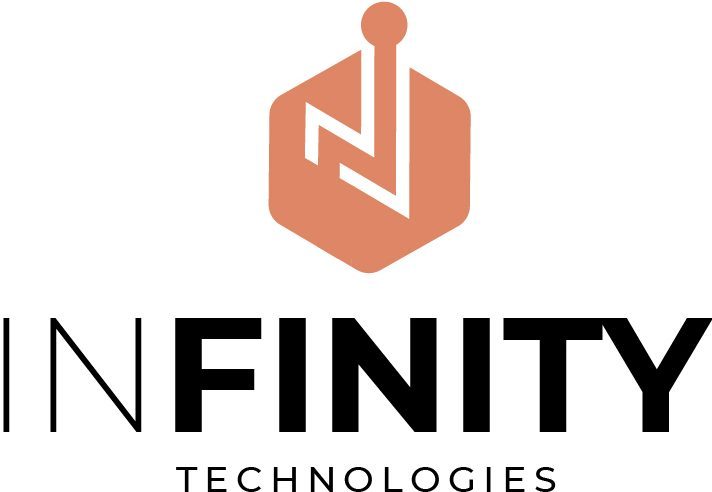What is Search Engine Optimization?
Search engine optimization (SEO) is the art and science of optimizing a website so that it appears more prominently when users search for products or service. The higher a brand’s visibility on search engines is, the greater its chances of capturing business.
The visibility of a website is often measured by its placement or ranking on the search engine result pages (SERPs). Companies always strive to be on the first page of search engine results, as this is where they will get the most attention.
Google is a good example of a SERP that often features ads at the top. Businesses are willing to pay a premium to guarantee their placement on the first page. The regular search listings are listed after the ads, and marketers and search engines call them organic search results. SEO aims to improve a company’s organic search rankings, resulting in more organic traffic. Data marketers can distinguish between organic search traffic and traffic coming from other sources, such as social media, paid search and referrals.
Organic search traffic tends to be higher quality traffic, as users are actively looking for a topic, product or services for which the site may rank. When a user discovers a site via a search engine, this can result in better brand engagement.
How does SEO Work?
It is nearly impossible to completely manipulate search algorithms. SEO is not easy and requires time and effort. Businesses are often looking for the fastest way to achieve the best results. SEO is not a strategy that can be altered today and expect to see results the next day. SEO is a project that requires daily activity and constant action.
Search engines crawl websites using bots, which download and store the information in a collection called an index. The index acts like a librarian when a user searches in it. The search engine displays the relevant information from a search query, and shows content that is related to what users were searching for. The algorithms of search engines analyze the pages in the index and determine the order they should appear on the SERP.
What are the algorithms used to evaluate search engine optimization?
There are hundreds factors that determine what content is displayed in a SERP. They can be boiled down to five factors that determine the results returned for a query.
- Meaning of the query. The algorithm must first determine what the user is looking for in order to return relevant results. Intent is the term used to describe this. The algorithm looks at the language to determine intent. The algorithm will also take into account spelling errors, synonyms, and the fact that certain words have different meanings in different contexts. Search engines, for example, would have to be able distinguish between “bass”, a fish or “bass”, an instrument. To display the correct information, intent would be based upon additional search terms as well as historical search, location searches and more.
- Relevance of web pages. The algorithm analyses the content of webpages to determine if they contain relevant information to what a searcher is seeking. After establishing the user’s intent, this is done. The keywords that were used in the search would be an indication of relevance. It can be in the page title or body copy. Search engines also use aggregated data from interactions to determine whether a page is relevant to a search query. It uses anonymized search data to match the page and the query.
- Content of high quality. The goal of search engines is to prioritise the most reliable sources. The algorithms are able to identify pages that demonstrate authority, expertise and trustworthiness based on the intended intent.
- Usability of websites. Search rankings are heavily influenced by web design and accessibility. The algorithm considers how the site looks in different browsers and whether it is designed for different devices, such as phones, tablets, and desktops. It also checks if page loading times are fast enough for users on slower internet connections.
- Context and settings. Search engines, using their algorithms, use past search histories and search settings in order to determine the most relevant results for a particular user. Content can be tailored to a user’s location and country. If someone searches for “football” from Auckland, they will get different results from someone who enters the same query for Auckland.
SEO benefits
To make a business or website visible on the internet, search engine optimization in Auckland is a vital marketing tool. It also offers several other benefits for companies.
Building trust and credibility
Sites that are ranked high in SERPs will be considered as the best and most reliable. The results on the first page will be the most relevant and therefore, give the website or business more credibility. A website that has good content and an excellent user experience will rank higher.
Gives you a competitive edge
Those who do SEO consistently and more effectively will be ranked higher than their competitors. Businesses feel that they can’t afford not to be on the front page of search results. If a team is able to achieve this goal and be ahead of their competition, then they have an edge.
Reaches more people
SEO can help attract users at any stage of their customer journey, no matter what phase they are in. Keywords and phrases are used to draw audiences to certain products and services. Businesses can make a list with keywords they want to rank for, and then create content around them.
Content marketing is supported
Users are more likely find the information they need if you have a list with keywords that you want to rank and build content around them. Both content and SEO are in sync. Content that is useful and optimized for the keywords will help a site rank higher. The keyword should be present in the headings, the meta description and the body content to improve ranking.
Local search results are more relevant
Local searches are more popular, as users look for services or products “near me.” A company can optimize its listing in local searches by creating a Google My Business Account and optimizing it for these searches. Local search results will also be more prevalent if the content is localized on the website.
Understanding web environment
Users who stay current with the constantly changing internet will be better equipped to meet the SEO requirements for their website. Staying up-to-date allows businesses to better understand the search process and make informed decisions about how to adapt and change their strategies.
Cheap
Companies that want to have an effective SEO plan must invest the time and resources necessary to make it work. Companies can hire SEO experts, or they can manage their own strategies if they have the right team.
Get quantifiable results
You can use tools and analytics to determine the success of SEO. Google Analytics provides comprehensive data on organic traffic. The data includes the pages customers visited and keywords searched. This data can be compared with the intended actions to determine how SEO has played a part in customer acquisition or engagement.
SEO techniques
SEO is built on three main pillars:
1. Technical optimization. It is the completion of activities during the building or maintenance of a website in order to improve SEO. This has little to do with the actual content of the page. You can manipulate technical optimization by having an XML Sitemap, structuring the content intuitively for user experience, and improving site performance, such as page loading times, image sizing, and hosting environment.
2. On-page optimization. It is a process that ensures the content of a website is relevant for the users. The content of a website includes keywords and phrases that are relevant to the users. It also includes internal and external links, as well as a URL with focuses keyword. Content management systems (CMSs) are used by website administrators to manage on-page content.
3. Off-page optimization. This technique helps to improve a website’s ranking by implementing activities that are not on the site. Backlinks are the main driving force behind this type of activity. These can be generated by businesses through partnerships, social media and guest blogging.
These three components will help you focus on activities and techniques that can improve your website’s ranking.
Here are some techniques that you can use to enhance each of the three pillars.
- Research and selection of keywords. Research keywords to determine which terms are the most important for ranking. To be relevant to search engines, businesses should concentrate on keywords with high search volumes. It is also possible to develop a strategy by analyzing the top-performing keywords of competitors.
- Quality content is important. The content strategy will follow the keyword strategy. Quality content relevant to readers’ search queries and pages will appear higher in SERPs.
- Develop unique page titles and meta descriptions. Page titles should contain the page’s main keyword. Meta descriptions should summarize what the user can expect to find on the page. These elements will be displayed in SERPs, and people are likely to use them as a guide for their clicks.
- Pay per click can be used to complement organic traffic. Paid advertising allows marketers to test meta descriptions and title tags that appear in SERPs. This can improve organic click through rates. These ads, which mimic organic results and ensure a top-page placement on the SERPs, allow marketers to test what copy encourages users to click. This can be used to change page titles and meta description with organic results.
- Use alt text when using images. Alt text describes an image displayed on a website. It is important for crawling bots to be able to identify the image. This also verbally describes the image for people with visual impairment. Keywords can also be entered here.
- URL slug. A URL slug refers to the unique portion of the URL for a particular page. It is also important to include the keyword that is relevant to the content of the page in this area.
SEO Tools
There are hundreds tools available to manage, improve and track the SEO effectiveness. Some tools are free, while others are not. They all help marketers to research keywords, develop strategy and measure the results. Here are some of the most common SEO tools that marketers use today.
- Semrush. Semrush is a platform for keyword research, online ranking data and more. It provides marketers with insight into the development and maintenance of keyword strategies. Semrush can also be used to track SEO performance over time.
- Google Analytics and Search Console. This platform gives real-time information on SEO effectiveness. With Google’s Search Console marketers can track website traffic, optimize ranking and make informed decisions regarding the search results of a website.
- Yoast SEO. A WordPress plugin that improves on-page SEO for websites using WordPress CMS. Users can specify the URL slug and meta description. Users can see how their content may appear in search results. Users can use a checklist to ensure that their page is optimized.
- Ahrefs. This tool can be used to audit websites, and provides keyword, link, and ranking profiles. It can also determine which pages are performing best and those that need to be improved.
- SpyFu. This tool is used to research competitor keywords for Google Ads. It can also provide detailed information on competitor SEO and PPC data.
- HubSpot Website Grader. This tool is free and provides report cards that provide actionable insights on SEO performance. It shows if a site is mobile-friendly, measures the performance of a website and provides security recommendations.
- Google Trends. This tool searches for trends in content across countries and regions. It finds popular topics as well as long-tail keywords that relate to them. It compares these trends over time.
- Bing Webmaster. This tool allows marketers to view backlink profiles and perform keyword research. The tool also includes a site scan feature.
- Consultants. Consultants are not a free tool, but they do have the SEO knowledge that many teams lack. Good consultants are able to help you develop the best strategies, implement or recommend a long-term plan. They can also provide metrics that will help determine success.



